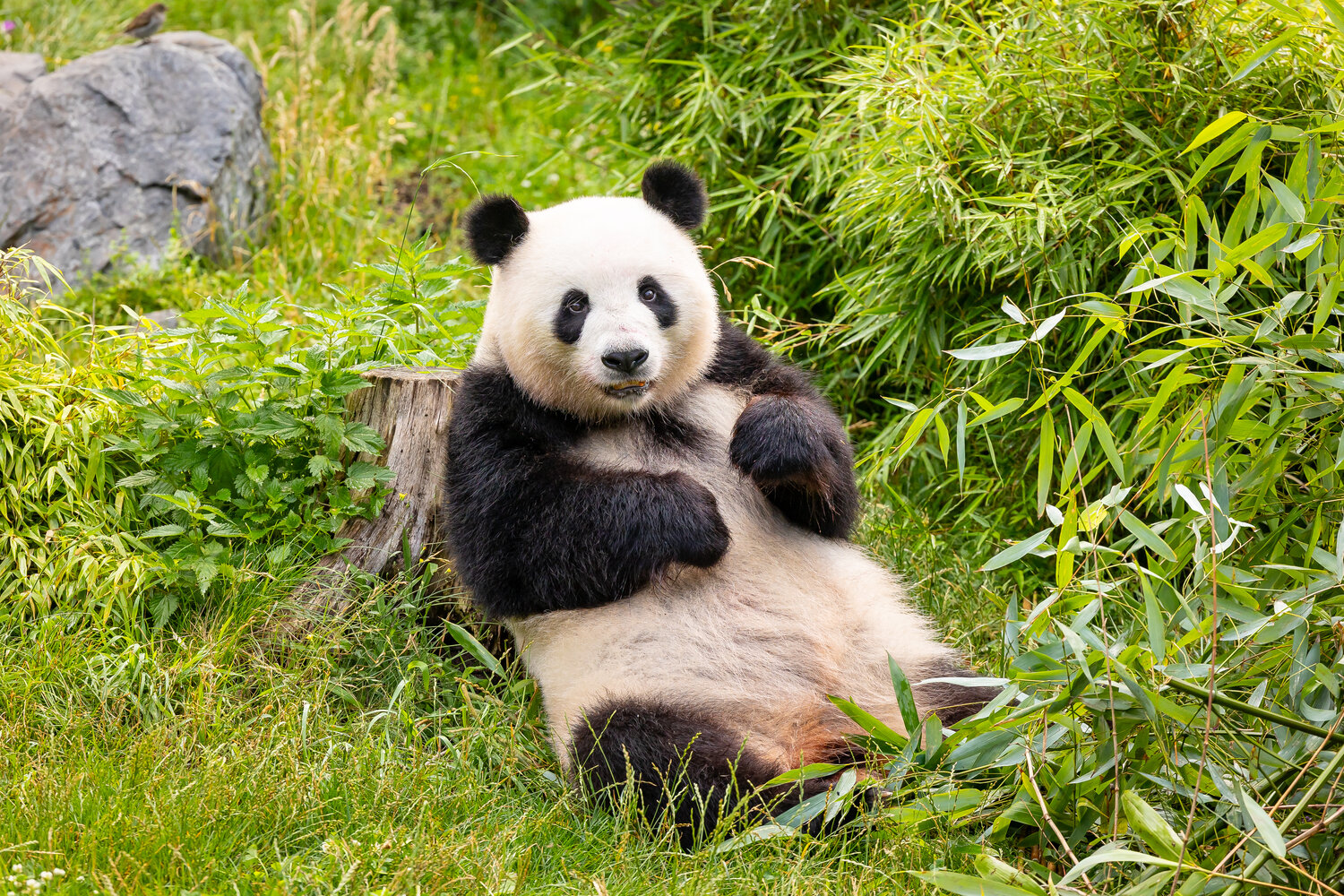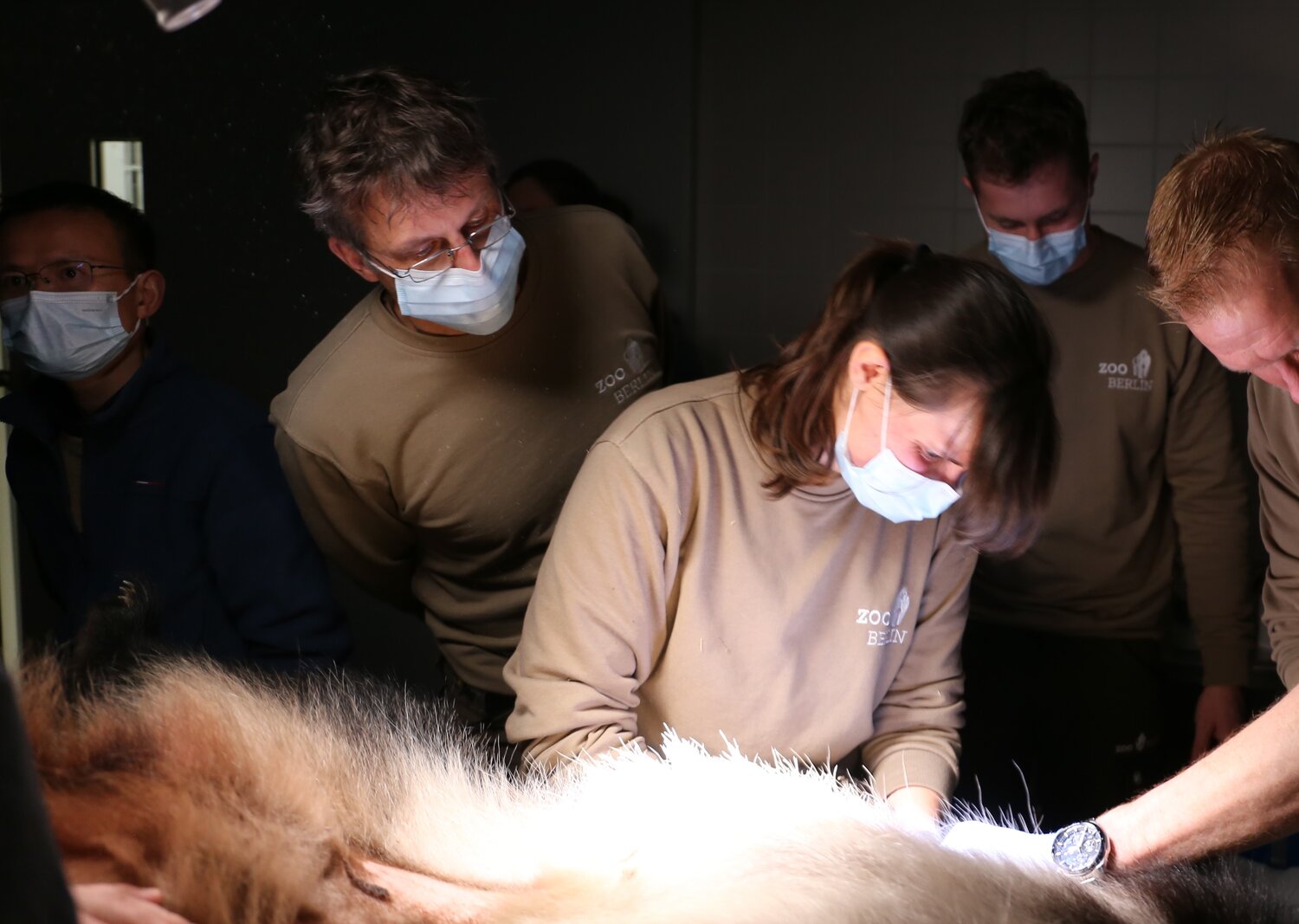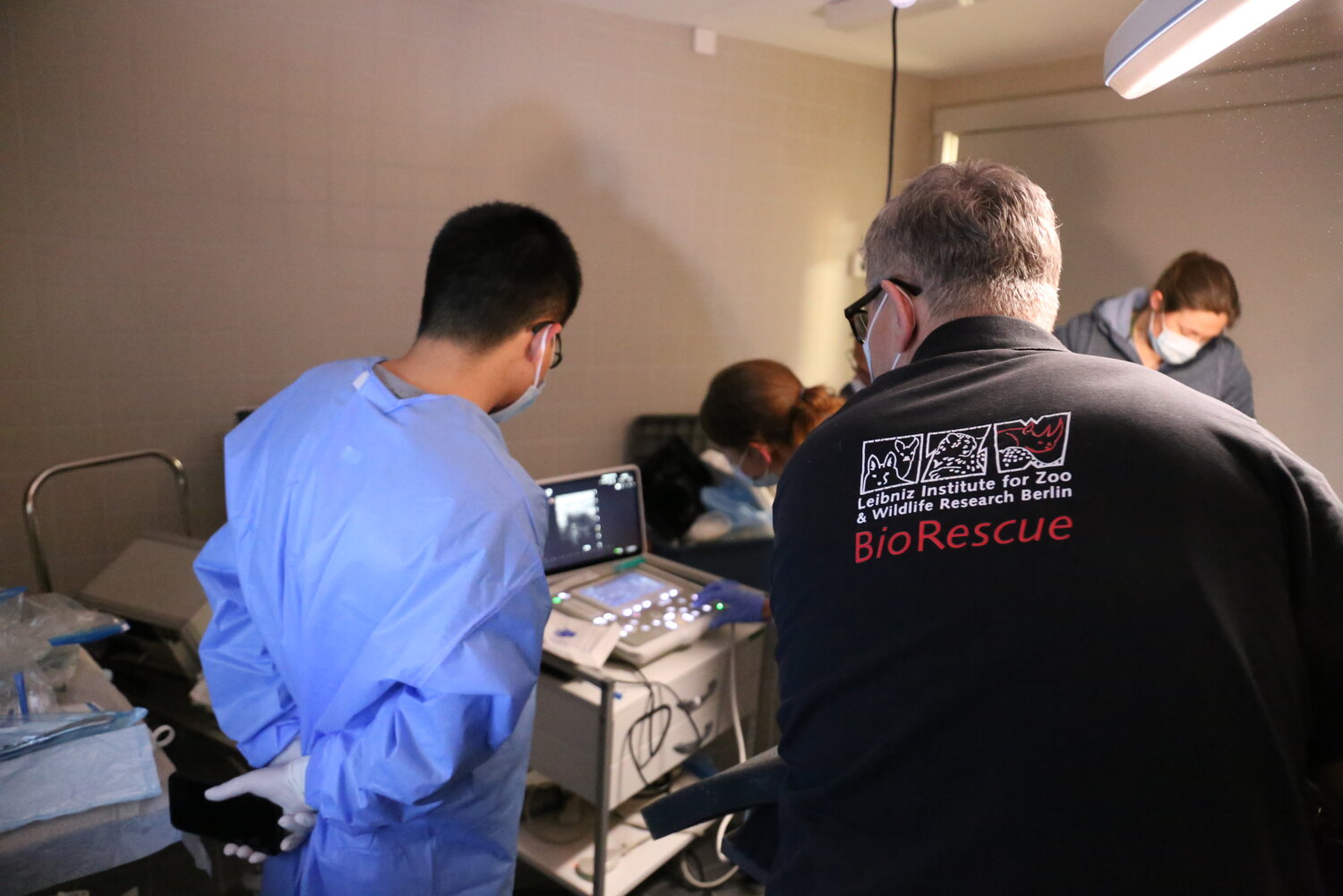This Monday night, Zoo Berlin’s female panda Meng Meng exhibited the signs that reproduction experts had been waiting for: clear patterns in her levels of oestrogen and progesterone signalled that that the bear’s few hours of fertility had begun. This brief window for possible conception could only be identified and utilised thanks to intensive observation and careful preparation on the part of the international team of experts. Several attempts were made to bring the pair together to mate naturally. However, after witnessing Meng Meng’s sceptical attitude towards male Jiao Qing, the team ultimately decided against that approach in order to rule out any risk of injury. Artificial insemination was then carried out by Prof. Thomas Hildenbrandt and Dr Susanne Holtze from the Leibniz Institute for Zoo and Wildlife Research, in collaboration with Chinese panda experts who had travelled from the Chengdu Research Base of Giant Panda Breeding to assist their colleagues in Berlin. The scientists were actively supported by a team of animal keepers, biologists, hormone specialists and two veterinarians from Zoo Berlin. With a bit of luck, that careful intervention may lead to the birth of more giant pandas at Zoo Berlin.
A successful pregnancy and birth would make a great contribution to ensuring the survival of this rare and vulnerable species. “Modern reproductive medicine is extremely important for giant pandas, as it greatly increases the chances of offspring,” says Prof. Hildebrandt, who heads the Department of Reproduction Management at the Leibniz Institute for Zoo and Wildlife Research and also serves as a scientific advisor to the Chengdu panda base. The technique used with Meng Meng, he explains, is one people may be familiar with from human medicine: artificial insemination under general anaesthetic. “I’ve had one eye on my phone at all times this past week and have been in constant contact with my colleagues at Zoo Berlin,” says Hildebrandt. “When the clear results came through on Monday evening, I immediately made my way to the pandas.” Meng Meng and Jiao Qing both coped well with the procedure and now remain under the observation of the panda experts.
“I would like to thank the outstanding team, who worked very professionally and with full dedication to ensure we were able to identify and make the most of this brief moment,” announced Zoo and Tierpark Director Dr Andreas Knieriem. “A successful panda pregnancy cannot be determined until shortly before the birth, so we will need to wait up to six months to find out whether the procedure worked.” What is important now, Knieriem explains, is that Meng Meng receives an optimal diet: “Sufficient energy reserves are crucial to ensuring a successful panda pregnancy, as only mothers that build up a good fat reserve will have enough milk to feed their offspring.” Delayed implantation, also known as diapause, is a feature of giant panda reproduction. Unlike in most mammals, the fertilised egg does not immediately implant in the uterine wall. Instead, it remains in a dormant state in the mother’s uterus for a period of time. The embryo does not develop any further during this phase of dormancy, which can last several months. Only when environmental conditions are favourable does the pregnancy progress and the embryo start to develop. The gestation period for giant pandas can therefore last anywhere from three to six months.
Giant pandas require very specific conditions to thrive. Due to loss of natural habitat, populations have declined sharply in recent decades, seriously threatening the species’ survival. Thanks to rigorous measures to protect the bears against poaching and to promote the establishment of protected areas with connecting “corridors”, populations have recovered somewhat. However, numbers are still alarmingly low, with fewer than 2,000 giant pandas currently living in their natural habitat. “Without conservation measures, the giant panda would most likely already be extinct,” says mammal curator Dr Florian Sicks. “Research into and the conservation breeding of individuals in human care play a big role in saving the giant panda. We have done our best over the past hours, weeks and months – all that’s left to do now is keep our fingers crossed.”


